At the start of 2024 (referred to in this article as “this year” despite it now being 2025), I set out to track the wins and losses of my Commander decks. Between playing in a variety of pods and logging countless hours on Spelltable—especially during December—these decks faced a diverse range of opponents and strategies. In this article, I’m excited to showcase the decks that have been able to consistently Cement Victory throughout the year.
Clavileño, First of the Blessed
51% win rate over 39 games, Estimated Power Level: 7
Decklist: https://archidekt.com/decks/10788340/clavileo_first_of_the_blessed
Clavileño was a surprise hit for me this year. I recieved the Blood Rites #blessed vampire precon as a gift and, after swapping out about 18 cards, discovered how much fun it could be. Most of my Clavileño games were on Spelltable in December, going toe-to-toe against a wide variety of opponents. Despite this deck’s straightforward gameplan – cast vampires, bless attacking vampires, swing with vampires – this deck has enough subthemes, nuance and variance to make it fun and engaging to every time I play.
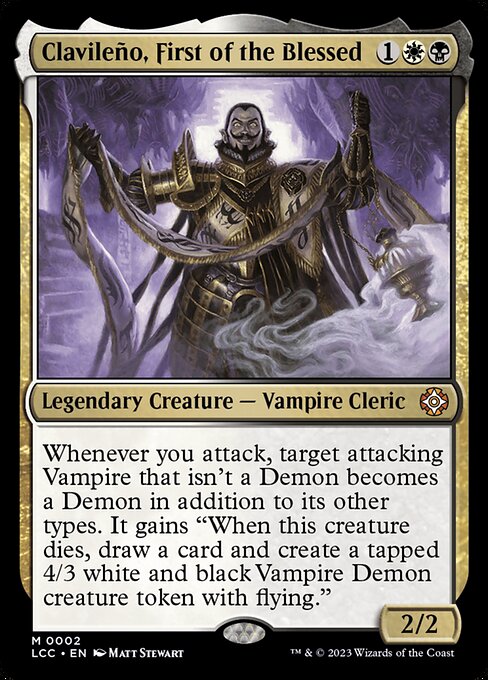
This game plan is simple: play vampires on turn 1 or 2, play Clavileño on turn 3. Starting turn 3, attack, bless, cast vampires, repeat. Keep blessing those vampires and keep turning them sideways. Turn your commander sideways! You’ll find most people don’t want to give you that card and 4/3 flyer so they will often let the damage through. In earlier iterations of the deck, I focused on evasive vampires, but I soon realized value-oriented vampires were more effective. Having opponents choose between allowing me to keep a value creature or letting me draw a card and get a 4/3 flyer is the perfect ‘math is for blockers’ mentality.
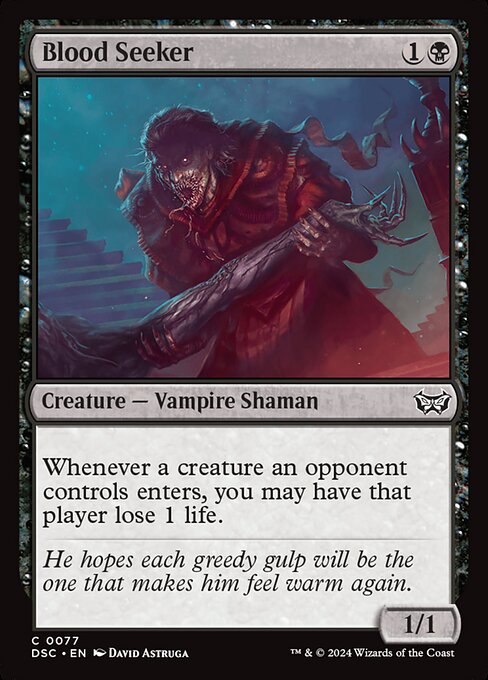
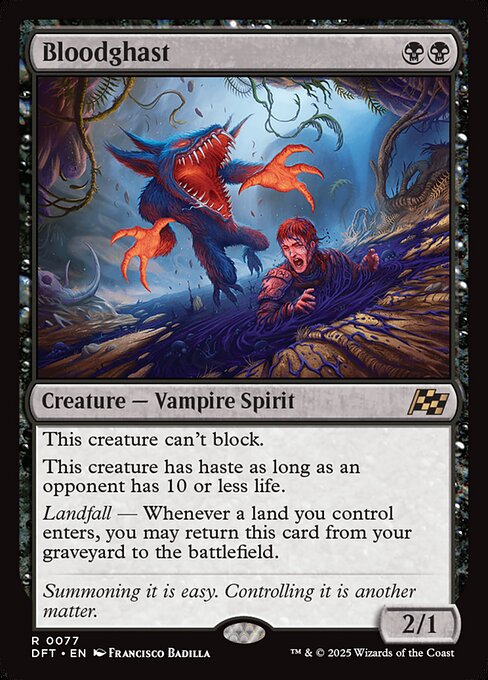
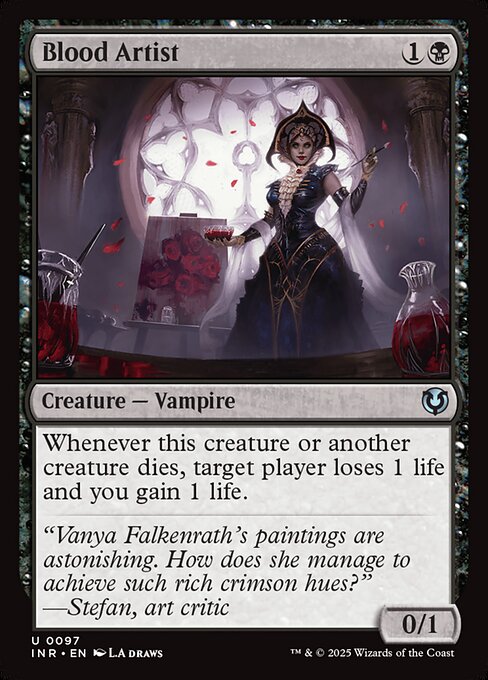
The deck’s resilience is where it truly shines. Typically you end up with a board of blessed vampires, someone board wipes and you get a new board of fat flyers and a new grip to boot. You can now start casting your reanimator vampires and spells to keep the pressure on. While the precon comes with a few solid options like Bloodline Necromancer and Carmen, Cruel Skymarcher, I’ve expanded on this subtheme with powerhouses like Patriarch’s Bidding, Bishop of Rebirth, even a Living Death for when your opponents coordinate two board wipes to deal with you – it’s happened to me!
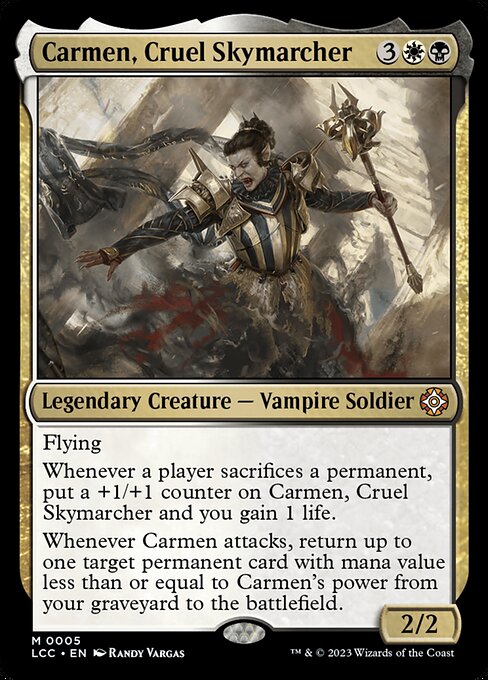
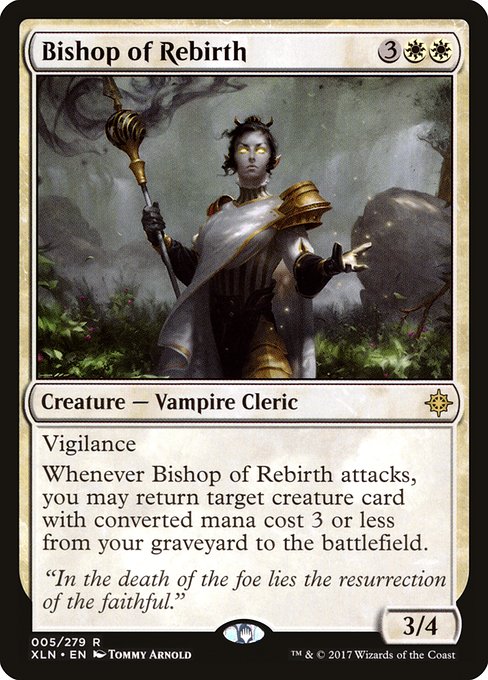
The aristocrat subtheme adds even more resilience and value, ensuring on-demand death triggers to provide you cards, damage, life gain, or all of the above. Sacrifice outlets also help mitigate exile-based removal or board wipes and ensure every death contributes to your game plan. Even Farewell isn’t so bad if you draw 8 cards first! Despite not being a vampire, consider adding Teysa Karlov to double down on death triggers.



Thanks to the deck’s constant aggression, opponents’ life totals tend to be low. There’s plenty of incidental lifegain the deck to keep you healthy while you’re on the offensive. When it’s time to close out the game, look to the deck’s game-ending threats: cards like Cordial Vampire, Sanctum Seeker, and Olivia’s Wrath. Even support cards like Marauding Blight-Priest can be surprise game ender if you have a bunch of lifelinkers on board. One of my most memorable plays was attacking with 11 vampires with Marauding Blight-Priest and Sanctum Seeker on board, draining each opponent for 22 life – combat damage hadn’t even been done yet!
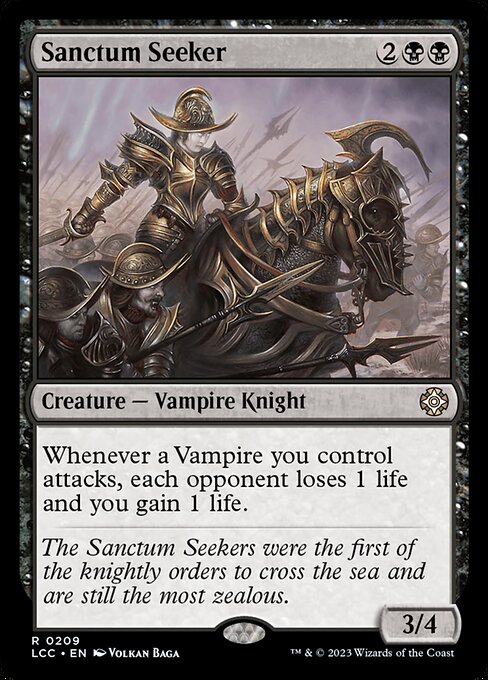
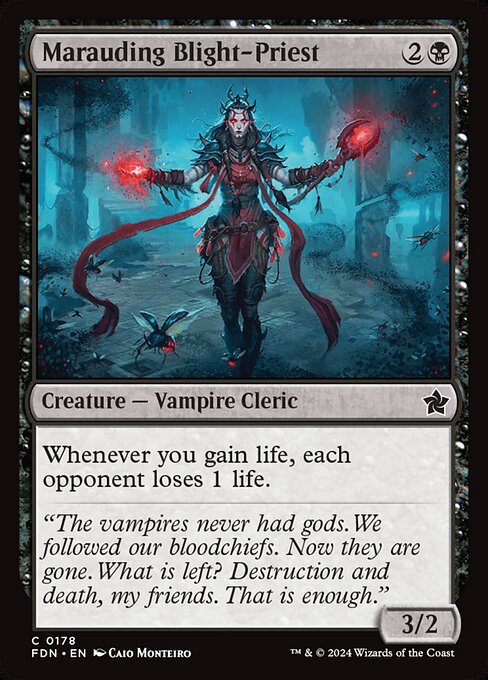
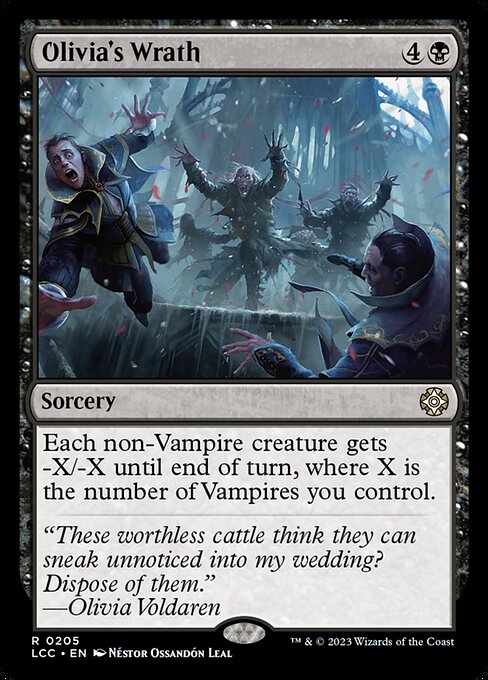
Let’s not forget sneaky tricks like New Blood. Don’t discount the fact that it exchanges all creature types on that card for Vampire – at minimum this can make the stolen creature a vampire, but it can turn anthem effects in your favor and do all kinds of other tricky things. You can also run Populate effects to keep pumping out those 4/3s – highly recommend Muster the Departed!
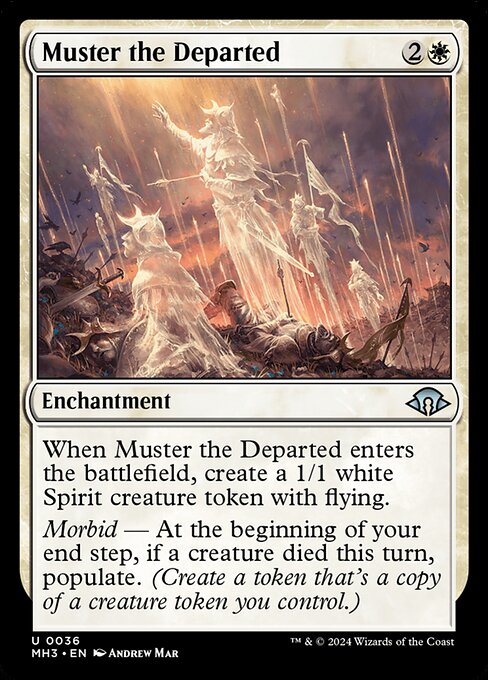
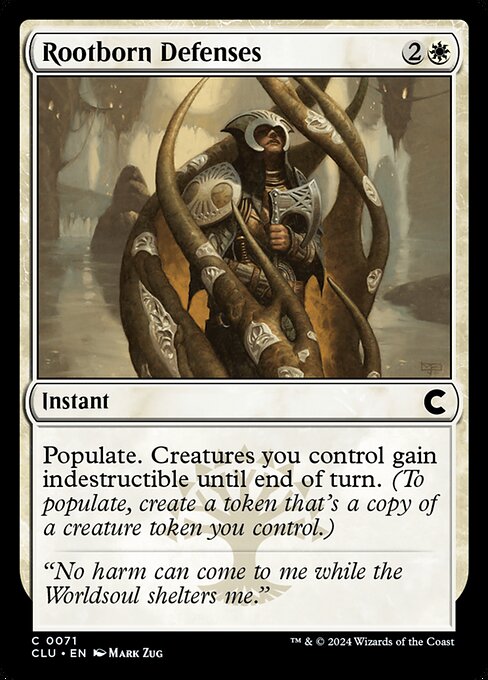
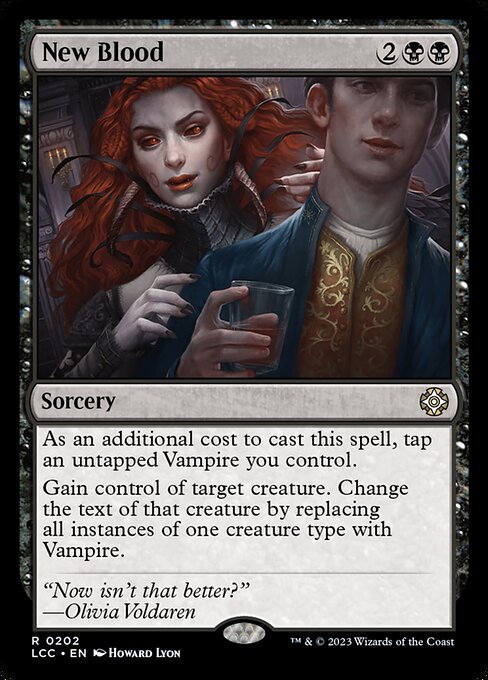
Overall, Clavileño, First of the Blessed, is a resilient, aggressive, and wildly entertaining deck to pilot. Highly recommend giving it a try!
Glissa, the Traitor
64% win rate over 28 games, Estimated Power Level: 8
Decklist: https://archidekt.com/decks/10788457/glissa_the_traitor
Glissa was my first ever commander deck, and while it has evolved significantly over the years, it remains one of my favorites. My first article was also about the current theme of Glissa – after all the time I spent tweaking, building, and re-building her, I was very pleased with her performance this year, ending at a truly impressive 64% win rate. Glissa’s recursive nature is a nightmare for many strategies to deal with, presenting soft locks while accruing value.
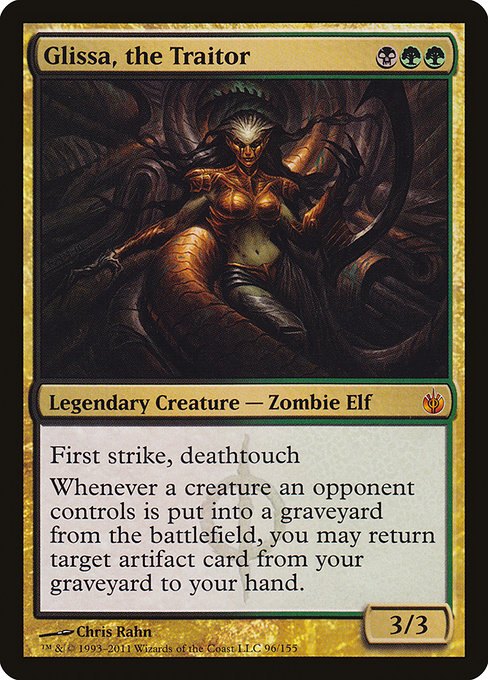
Glissa shines against a wide range of decks thanks to her ability to use self-sacrificing artifacts to draw cards and interact. She runs a number of ways to ensure enemy creatures die, triggering her ability to return artifacts back to the graveyard. This allows you to use key artifacts repeatedly, generating incredible value. She handles graveyards extremely well with cards like Nihil Spellbomb and Soul-Guide Lantern. Ratchet Bomb obliterates token decks and superchargers her value (I need to pick up a The Filigree Sylex for redundancy). Haywire Mite and Sylvok Replica can keep artifact and enchantment decks in check. With First Strike and Deathtouch, Glissa herself makes go-tall ground-based combat difficult for opponents. Enemy aristocrat strategies passively fuel Glissa, triggering her ability to get artifacts back from the yard. Cards like Lokhust Heavy Destroyer can sacrifice itself and force your opponents each sacrifice a creature, triggering Glissa’s ability 3 times, letting you bring back the Destroyer and two other artifacts. Value!
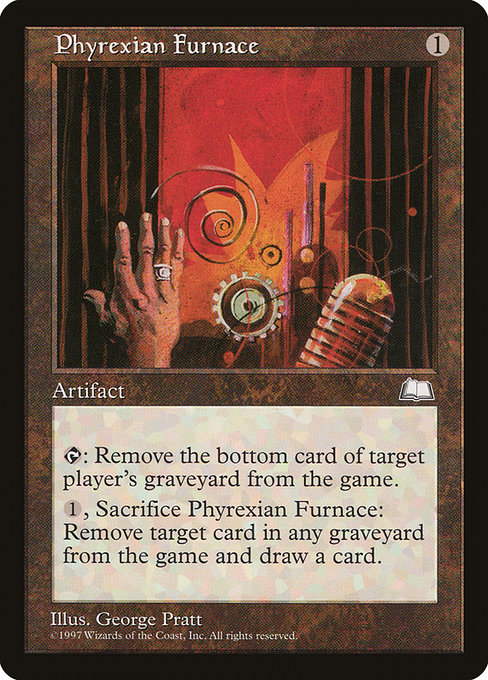
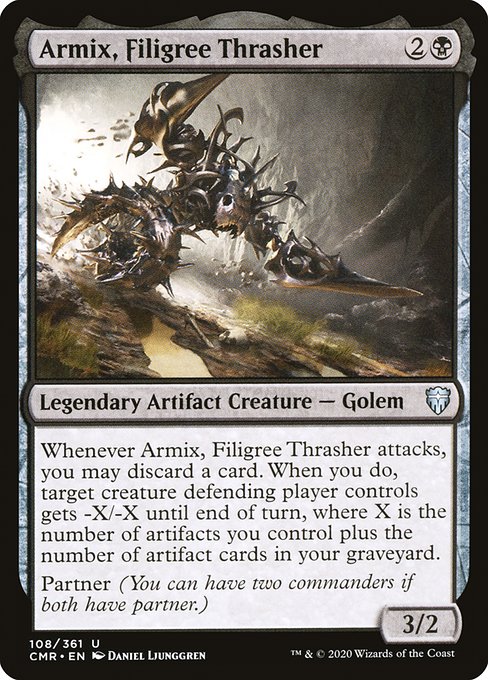
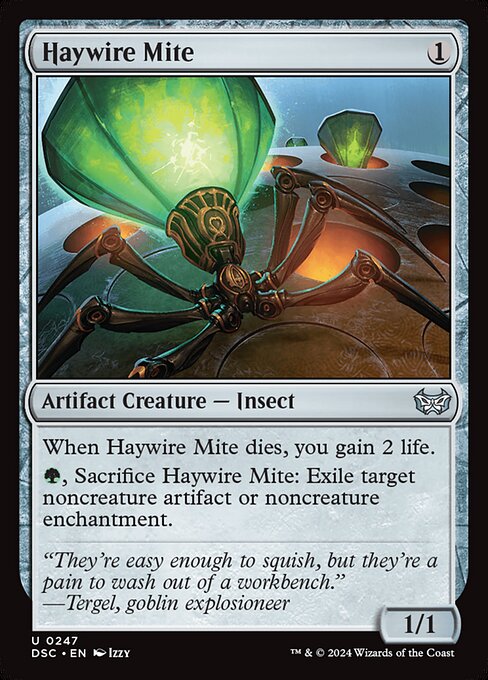
The deck does have weaknesses – namely, fliers, and my own hubris in running a criminally low land count of 30. Despite the deck’s many ways to sacrifice artifacts to find or ramp for lands, this low land count has occasionally left me 2-3 turns behind in games as I fail to make land drops and need to spend my turns trying to ramp or draw just to stay on par with everyone else. While I could argue this weakness is also kind of a strength, as when you have a slow start you are typically not pulling aggro and no one’s bothered by you recurring Traveler’s Amulet, I aim to increase the total lands in this deck to 33 to have an overall smoother experience at the start of games. Though, as you all know, the struggle to find 3 cards to cut is real.
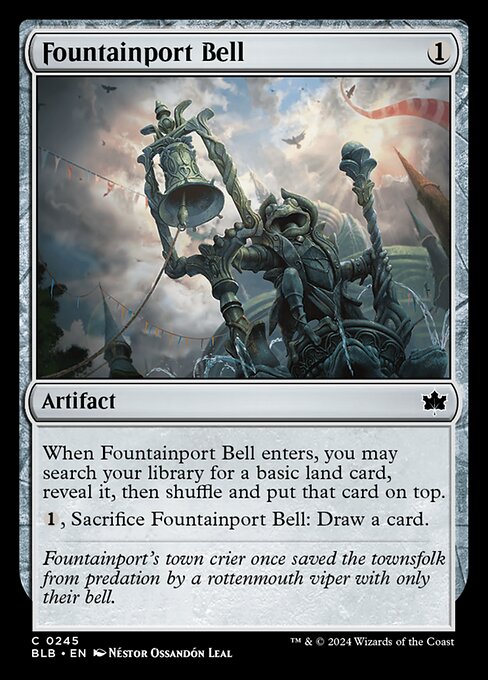

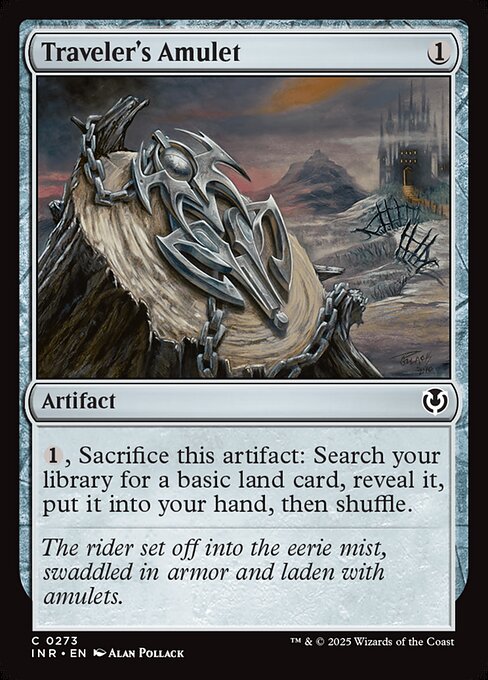
Hunter’s Bow was a godsend this year from the Assassin’s Creed set – it’s a removal spell basically, since Glissa dealing any damage to anything will kill it due to her having deathtouch. Plus it gives her reach and ward 2, covering one of her greatest weaknesses – flyers – and it’s an artifact, so you can bring it back from the yard with Glissa’s ability. It’s not self-sacrificing though, so you’ll need to find Krark-Clan Ironworks or another way to get it into the yard so Glissa can recur it.
I added a number of flash enablers like Liberator, Urza’s Battlethopter and Skittering Cicada this year. These allow me to keep artifacts in my hand until I know Glissa will be triggered, flash them in, sacrifice them, then Glissa brings them right back. This helps defend against graveyard hate decks and allows you to be more reactive in determining which spells to cast.
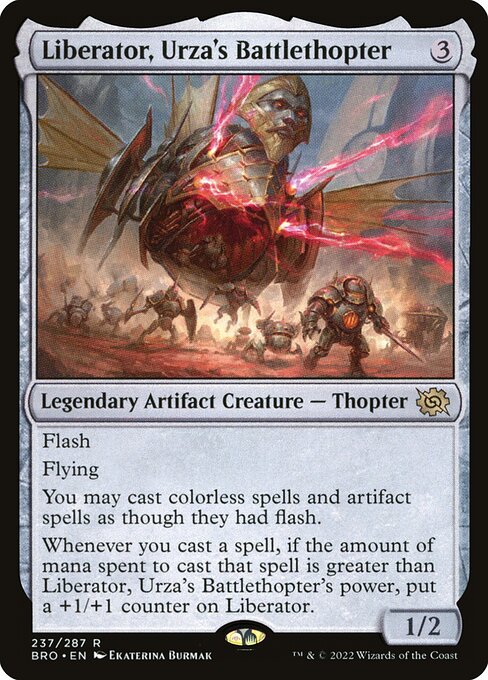
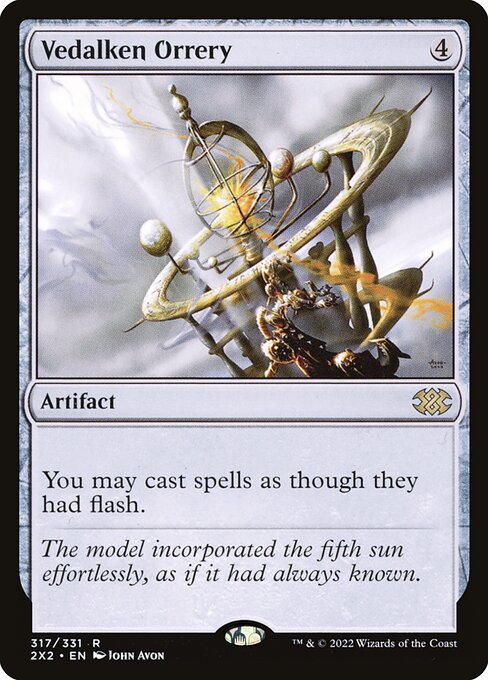
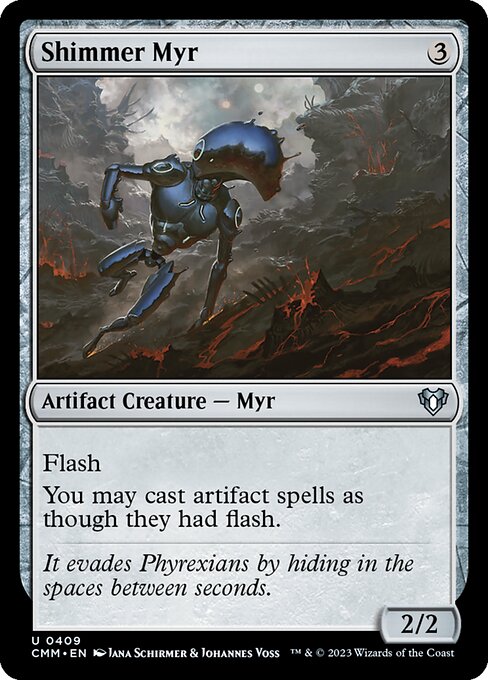
When the engine is online, this deck runs like a combination of a control and simic draw and ramp deck. Eventually the deck culminates into an artifact-artistocrat style AOE drain deck. If you like grindy value control with plenty of triggers and game actions without needing to take 20 minute turns, Glissa is for you! Very proud of this deck.
Saint Traft and Rem Karulos
55% Win Rate over 18 games, Estimated Power Level: 8
Decklist: https://archidekt.com/decks/10788578/saint_traft_rem_karolus
I started this year believing this would be my star deck – I built it early in the year and had immediate success with it. There are lots of cool synergies in the deck, as I discussed in my article about this commander. Because this deck can have so much going on with it, it tends to be an first-game-of-the-night deck, before you retire into a more straightforward strategy.
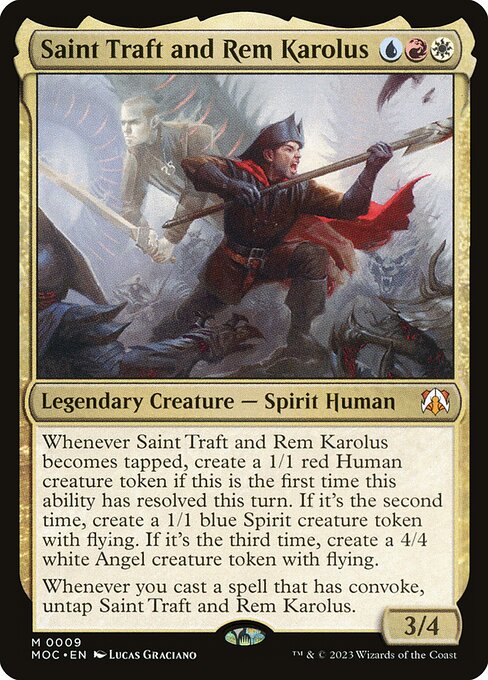
Saint Traft and Rem Karolus create incrementally bigger tokens each time they’re tapped, up to 3 tokens a turn. The commander can be untapped whenever a convoke spell is cast. While appearing in a convoke-heavy precon, convoke is more of a subtheme than a major one in this deck. Since Vehicles allow you to tap creatures to crew at them instant speed, you can crew vehicles that are already crewed, and you can crew with creatures that are summoning sick, Vehicles are the core enabler of the deck. The deck then includes cards that want to be tapped without necessarily attacking, like Daring Thief, Magda, Brazen Outlaw or Mistmeadow Vanisher as a subtheme. Since your commander is giving you small creatures pretty consistently, white weenie card draw like Welcoming Vampire or Tocasia’s Welcome give you a constant flow of cards, especially when paired with cards like Drumbellower that untap your creatures each upkeep.
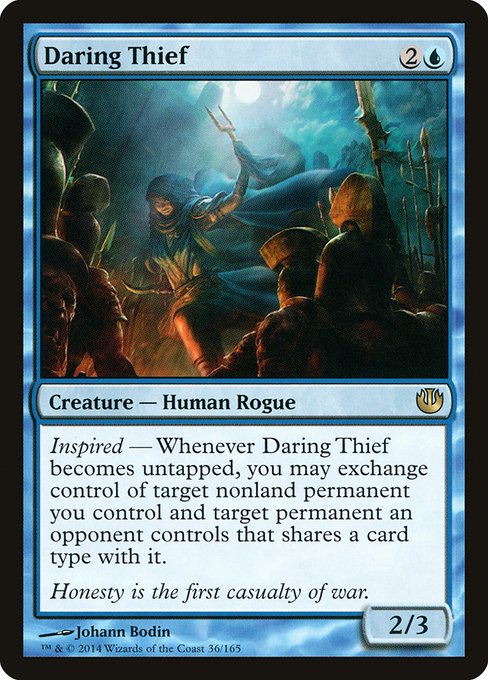
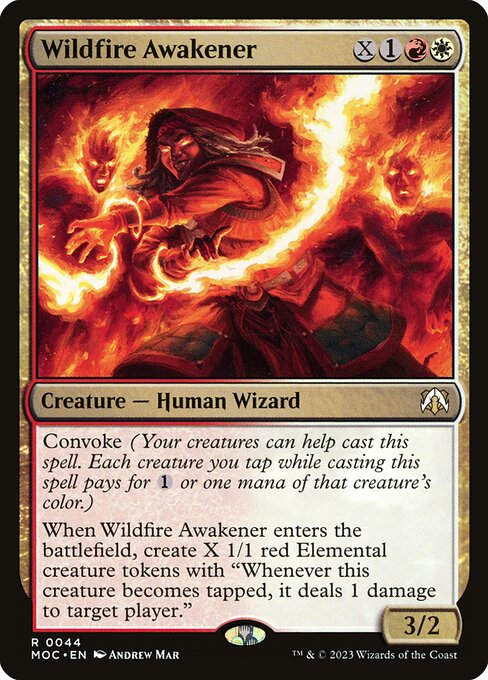
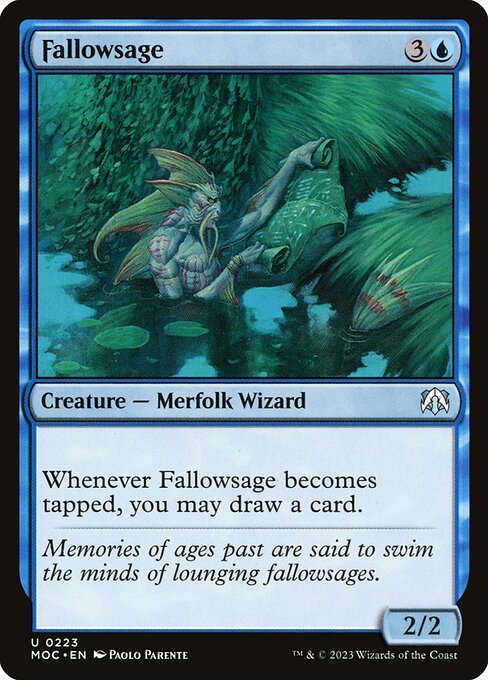
All these themes work together and leave you to optimize the triggers and game actions to maximize the benefit – making this a satisfying yet complex deck to pilot. This deck tries to win by burning people down with cards like Impact Tremors and Kyren Negotiations and has other support spells like City on Fire. Of course, if you could just go wide as well, as eventually you will have a large army you can just attack with for regular ol’ combat damage.
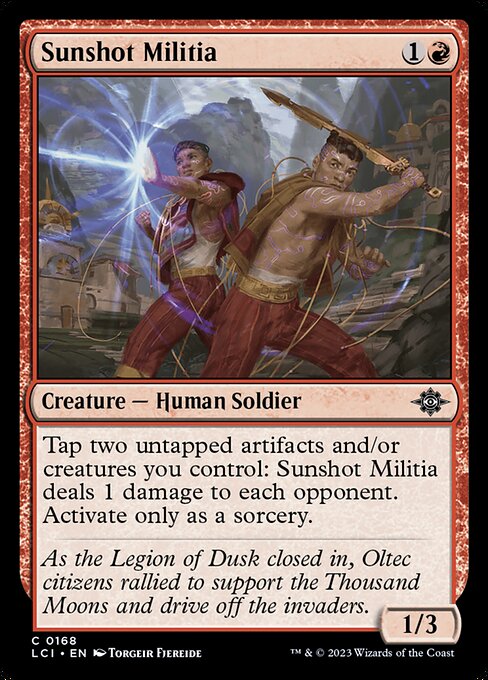
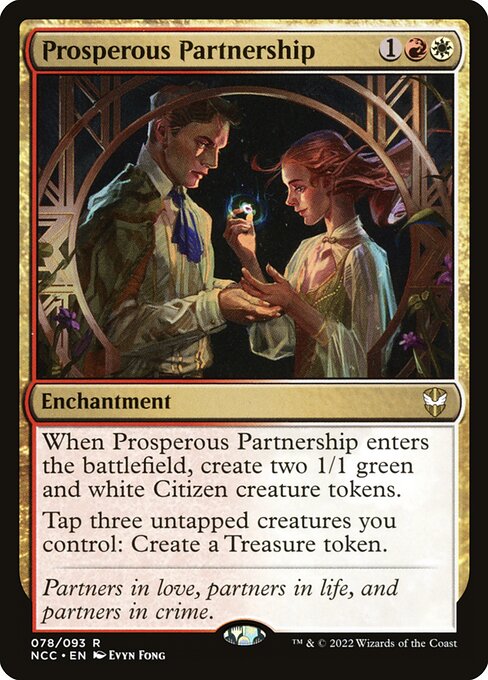
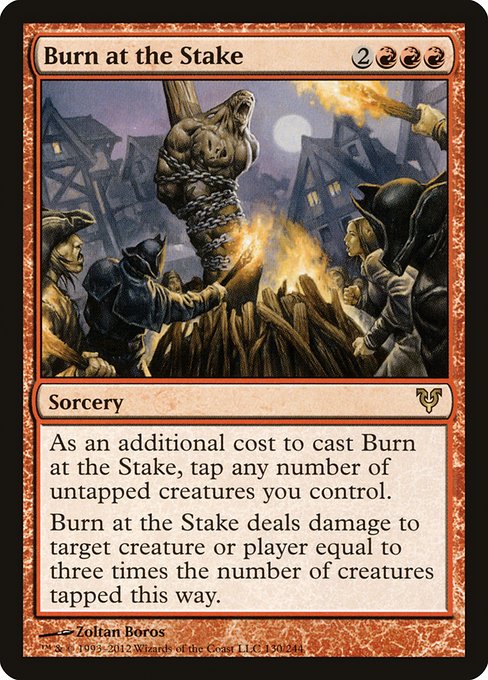
However, as a 3 color deck, it struggles with needing to access all of its colors to get fully online. You’re taking a risk for each card you play with more than one of the same color pip. Towards the end of the year I added a lot of redundant effects for cards and found the deck started struggling with colored pips. For example, Enduring Innocence – a slam dunk on paper, but with two white pips, sometimes I can’t get this down until turn 6. I may end up pulling a few cards for some talismans or other ways to color fix just to ensure this deck can hit the ground running. This deck’s landbase is still largely the Precon landbase and has a lot of room for improvement to have less reliance on taplands.
Eventually I accepted that this deck is more about steadily creating tokens throughout everyone’s turn instead of trying specifically to get 4/4 angels with the commander. The once-a-turn draw effects and global untap effects lean quite nicely into paradigm and has helped this deck end the year at a whopping 55% win rate over 18 games. Hoping to see some good vehicle upgrades in Aetherdrift!
Old Rutstein
100% Win Rate over 8 games. Estimated Power Level: 8
Decklist: https://archidekt.com/decks/10788519/old_rutstein
Ah, Ol’ Rusty. I’m almost afraid to play this deck and end his hot streak. 100% win rate over 8 games? What? What’s this creepy old geezy doing in these games?
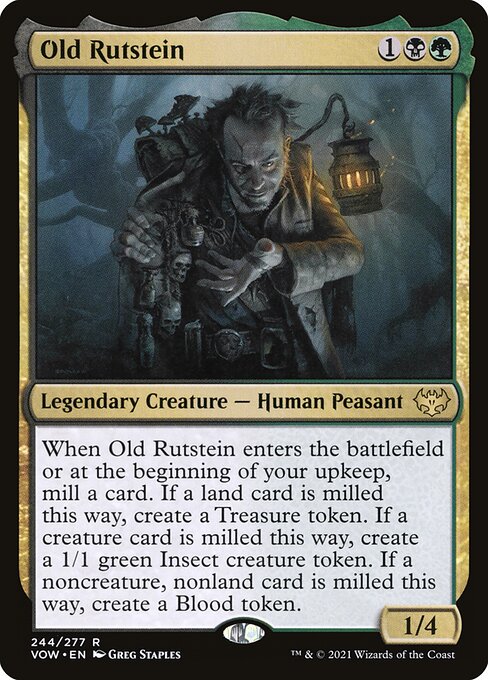
Old Rutstein is a modest Golgari self-mill commander. 3 mana gets you a 1/4 that mills a card when he enters and on your upkeep. Milled a creature? Get a 1/1 Insect. Milled a Land? Get a Treasure token. Milled anything else? Get a Blood token. Very straightforward, nothing super flashy, very low aggro.
Truth be told, I had an earlier version of Old Rutstein that I overhauled mid-year. The initial version went 1 and 6. That version was very creature-heavy and had a lot of payoffs that relied specifically on those Insect tokens that Rusty creates. But even if you play 35 or so creatures, only roughly 1 out of every 3 cards will net you an Insect, so if your whole deck relies on those tokens, your deck is going to be pretty mediocre.


I overhauled the deck – it’s now a self-mill aristocrat reanimator deck with a reliance on tokens in general. One of the deck’s strongest cards is Abhorrent Overlord, which by itself can net you an army of black Harpies based on your devotion to black. This is especially potent if you can reanimate him numerous times.
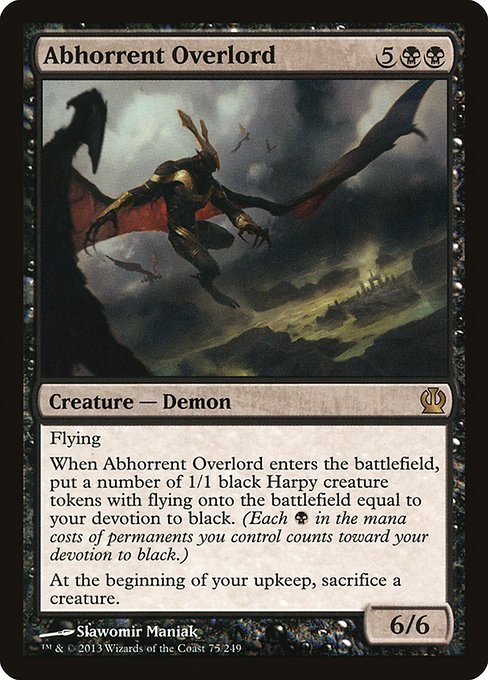
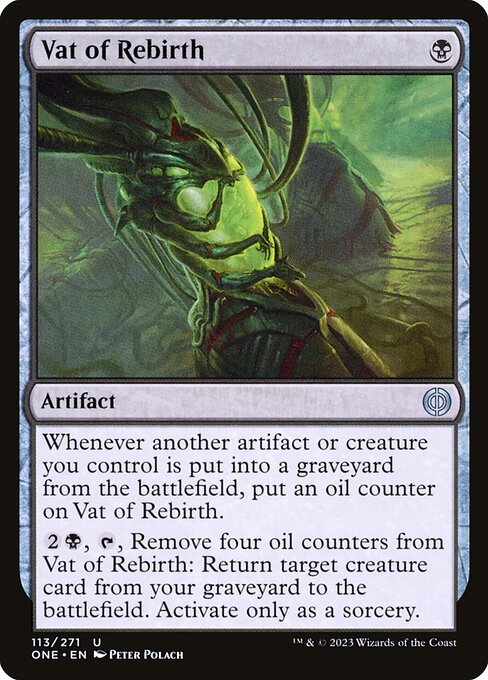
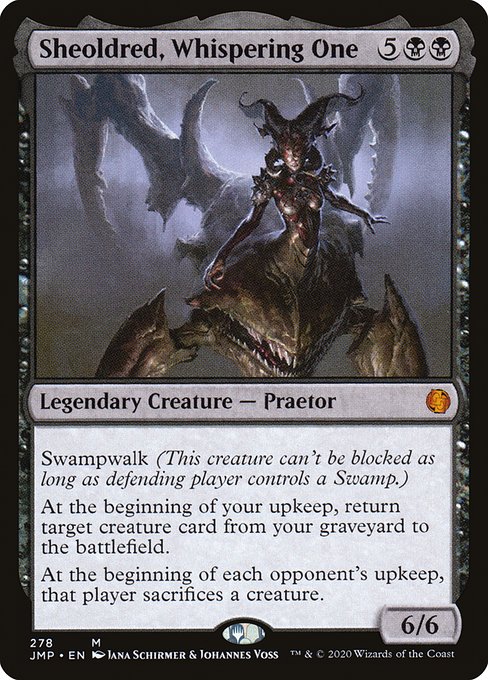
Let’s talk about the reanimator abilities in this deck, as they are the core of the deck: we’ve got a few of them that are repeatable, like Vat of Rebirth, Altar of Bhaal and Hell’s Caretaker. Note that Vat cares about artifacts going to the yard too, so that includes your blood and treasure tokens. If you reanimate a token generator and sacrifice some tokens, you could easily reanimate one card a turn with the Vat.
There are some strong cards that can get you one or two creatures back – Incarnation Technique, Stitch Together, Victimize and Dread Return. There are mass-reanimators as well, like the well-known Living Death, but this deck also makes use of some unique options like Illicit Masquerade and Lich-Knights’ Conquest.
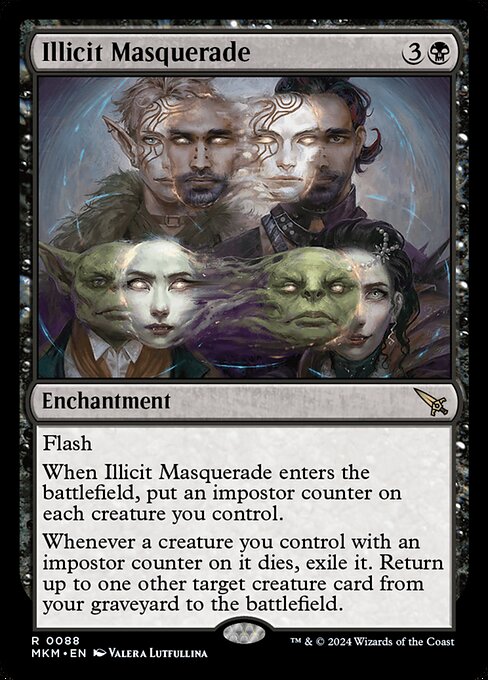
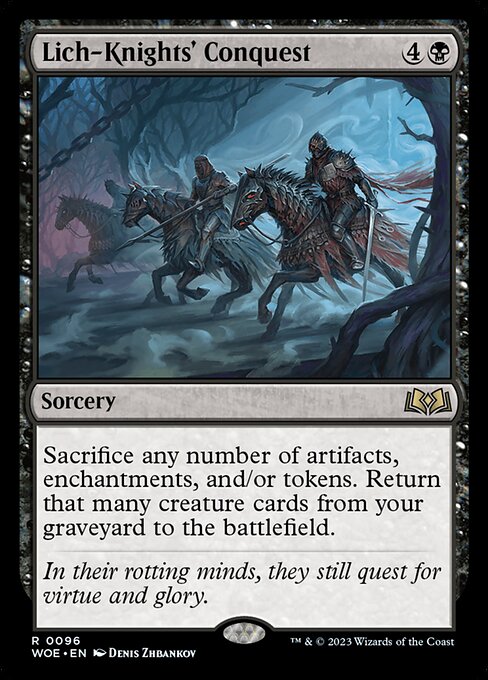
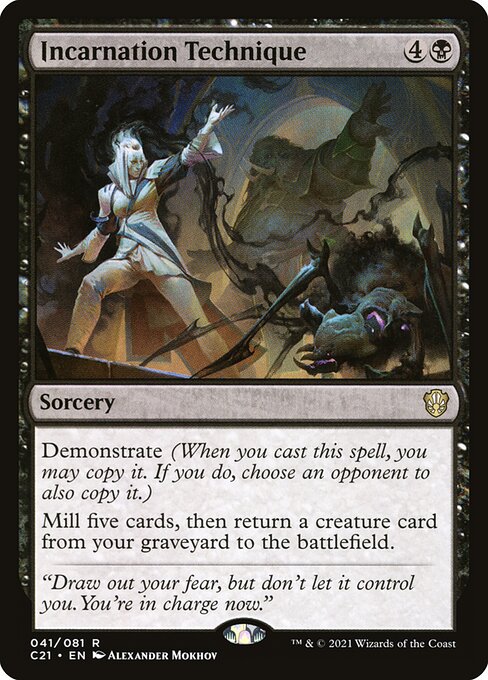
The Masquerade has some setup – as you want to cast it when you only have a bunch of tokens out, but have sacrificed all your non tokens. But if you complete the set up, then you could have each one of your tokens reanimate a target when they die. If you target something like the Abhorrent Overlord, you could easily end up with 20-30 tokens. Followed with a sacrifice outlet and an on-death pinger, you could take out your opponents pretty quickly.
Lich-Knights’ Conquest is pretty strong in this deck, as it allows you to trade your creature tokens, Blood and Treasure artifacts for creatures in the yard.
Don’t underestimate Woe Strider in a self-mill deck – being able to cast a sacrifice outlet from your graveyard is incredibly strong. I also opted for a Spawning Pit instead of some of the more traditional altars, as I liked that I could create additional tokens out of it and it is still an instant speed sac outlet.
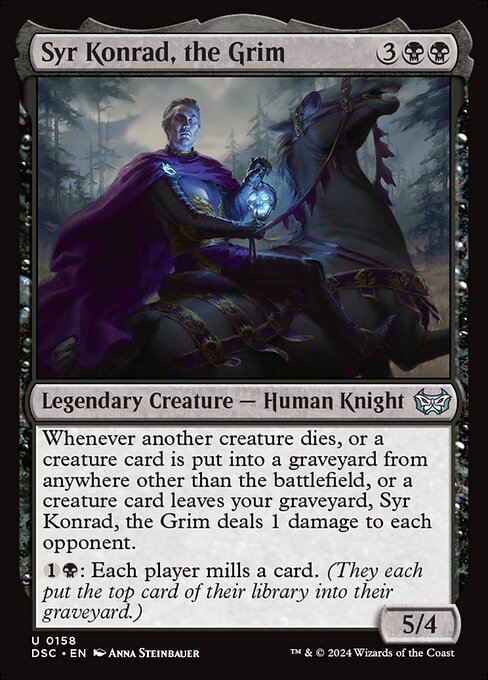
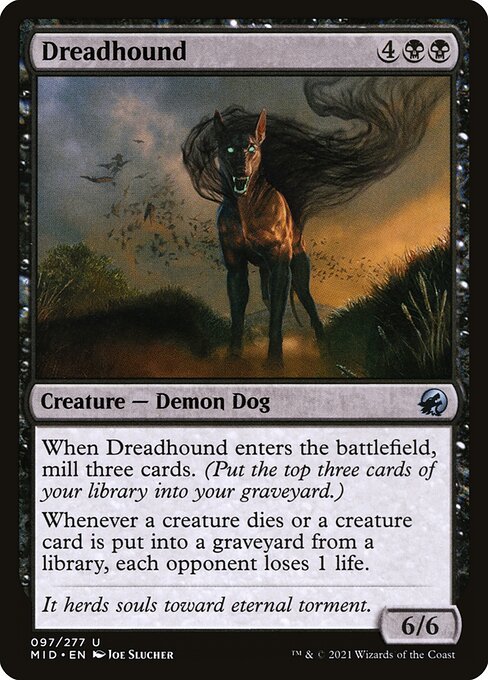

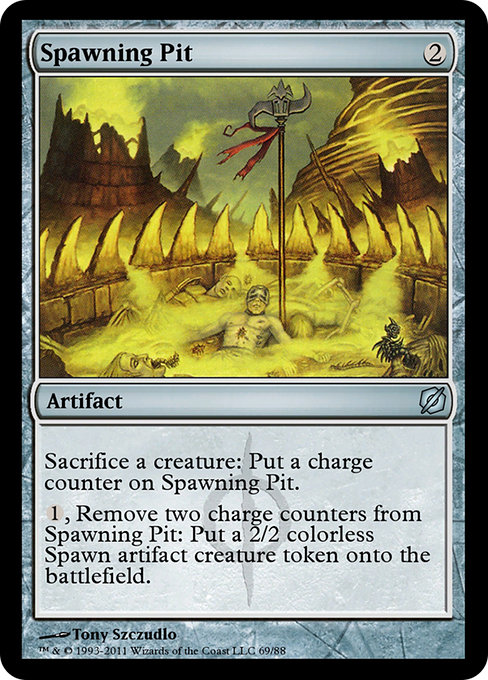
Cards like Syr Konrad, The Grim and Dreadhound are great finishers for this deck, as they both trigger when you mill creatures or creatures die. These effects are very potent in a self mill aristocrat reanimator deck. But of course, other cheaper cards like Zulaport Cutthroat, Poison-Tip Archer and others do an incredible job on the aristocrat side as well.
I also greatly underestimated the power of Blood tokens in the initial build. Being able to pitch your own reanimator targets from your hand to the yard for 1 mana is quite strong. Blood tokens also work extremely well with any Dredge card like Stinkweed Imp. You can pay 1, sacrifice the Blood, discard Stinkweed Imp to put ‘Draw a Card’ on the stack. When you resolve it, you can instead Dredge Stinkweed Imp pack to your hand instead of drawing that card. All of a sudden Blood tokens are ‘pay 1, mill 5’ – very strong.
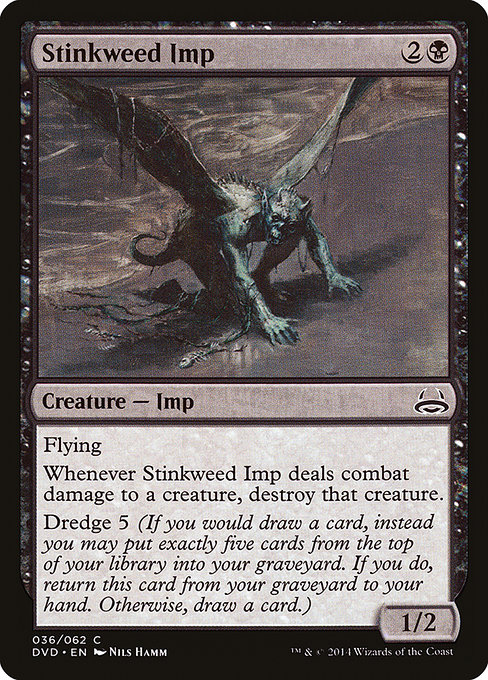
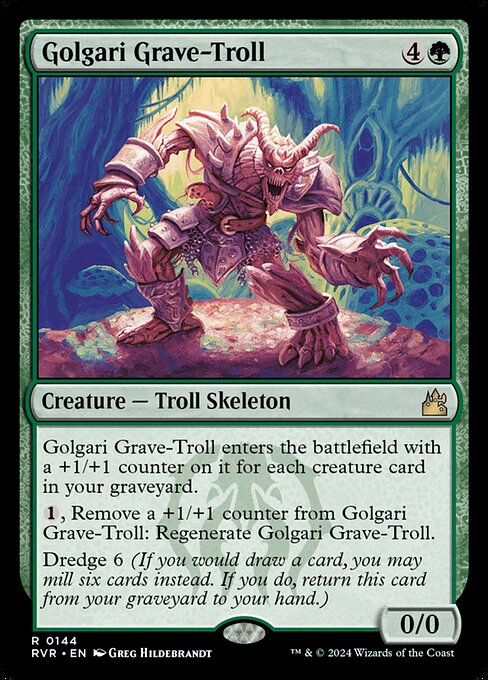
I don’t think this deck has any absolute blow-out cards or crazy strategies and I’m truly surprised at this year’s 8-0 rate since the overhaul, especially for a deck that costs less than $150 to put together. I generally think this deck should be a 7, but I bumped it to an 8 because of its win rate. Will that hold throughout 2025? Time will tell.
End Step
Reflecting on my year of Commander gameplay, these decks have not only brought me consistent success but have also showcased the sheer creativity and fun that the commander format can offer. From Clavileño’s straightforward yet surprisingly deep gameplay to Glissa’s grindy value engine, Saint Traft and Rem Karolus’ token synergy chaos, and Old Rutstein’s eerie yet effective token-and-reanimator strategy, each deck has given me unique and memorable experiences. While I have over 20 total decks and tracked data for them all this year, these 4 have proven effective and, in some cases, surprising in their results. Hope you enjoyed the retrospective, stay tuned for the next chapter: 2024 decks that need improvements!
For those curious, below are my decks that were played in 2024 and their wins & losses. Note that for most of these, the commander is a link to the decklist.
| Commander | Wins | Losses | Win Rate |
| Clavileño, First of the Blessed | 20 | 19 | 51.28% |
| Glissa, the Traitor | 18 | 10 | 64.29% |
| Skullbriar, the Walking Grave | 9 | 13 | 40.91% |
| Saint Traft and Rem Karolus | 10 | 8 | 55.56% |
| Rocco, Street Chef | 9 | 8 | 52.94% |
| Galadriel of Lothlorien | 5 | 10 | 33.33% |
| Faldorn, Dread Wolf Herald | 6 | 9 | 40.00% |
| Captain N’ghathrod | 2 | 9 | 18.18% |
| The Wise Mothman | 3 | 8 | 27.27% |
| Altaïr Ibn-La’Ahad | 3 | 7 | 30.00% |
| Ol Ruststein (v2) | 8 | 0 | 100.00% |
| Baba Lysaga, Night Witch | 2 | 6 | 25.00% |
| Old Rutstein (v1) | 1 | 6 | 14.29% |
| Zellix, Sanity Flayer // Scion of Halaster | 2 | 4 | 33.33% |
| Will, Scion of Peace | 3 | 2 | 60.00% |
| Eriette of the Charmed Apple | 0 | 4 | 0.00% |
| Ranar the Ever-Watchful | 2 | 2 | 50.00% |
| Imoti, Celebrant of Bounty | 1 | 3 | 25.00% |
| Kogla, the Titan Ape | 2 | 1 | 66.67% |
| Arni Metalbrow | 1 | 2 | 33.33% |
| Savra, Queen of the Golgari | 0 | 3 | 0.00% |
| Blim, Comedic Genius | 0 | 3 | 0.00% |
| Tyvar, Jubilant Reanimator (Oathbreaker) | 1 | 0 | 100.00% |
| Will, Delver of Dungeons | 0 | 2 | 0.00% |

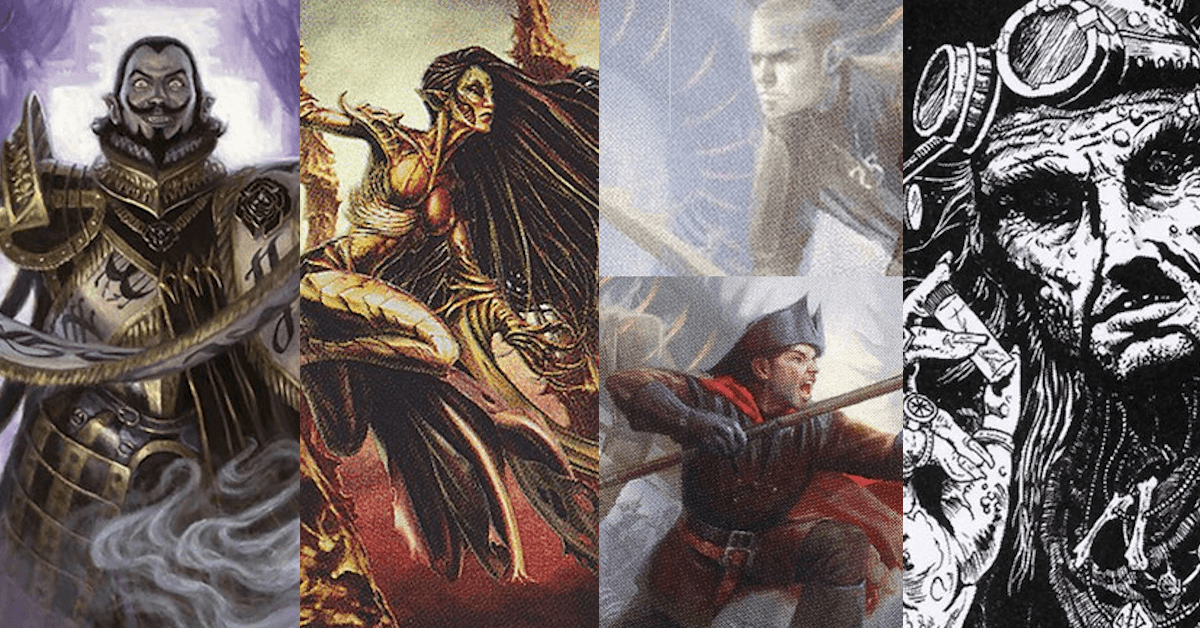
“You come at the king, you best not miss.”
-Ol’ Rutstein
Hey! I wanted to comment on here, seeing I’ve built Glissa as my first commander deck. I’ve never been able to win with her ever, even with a similar setup to yours; I’ve often found her to be slow compared to opposing combo decks and have been debating scrapping her entirely or continuing to upgrade her.
I’m very curious to know what your meta looks like and how she stacks up. Are you in a midrange-heavy meta? Combo-heavy or control-heavy? Are games sanctioned store events where they need to complete in an hour, or can you take your time?
Do you have a lot of issues filling your graveyard early? Controlling the board with few instant kill spells?
I appreciate any experience and advice! Thanks!
Hey there Lord-Garon, thanks for reaching out and apologies for missing your comment!
The decks I typically play against are people who rate their decks as “7s or 8s” or the new “Bracket 3 or Bracket 4.” I typically play with either friends or online on Spelltable, so these are not store events and there is no time limit. Glissa does not hit the ground running and typically needs a little bit of time to set up, but because she’s playing such modest artifacts early and her abilities are “fair” compared to modern commanders, she’s not typically seen as a threat until it’s too late. She is very control and interaction heavy and loves a long grindy game. Keep in mind though these games don’t typically last more than an hour – eventually people see the writing on the wall and concede to Glissa’s locks. There are some combos that you just will struggle to stop – for example, Thoracle – as you are not running blue. But most other combos that rely on one or more permanents you are pretty decently equipped to deal with them. You have repeatable removal effects – haywire mite, sylvok replica for artifacts/enchantments, filigree sylex/ratchet bomb for any token strategies, lokust-heavy destroyer as a repeatable edict, and more. If your pod is stronger power, you can run a few tutor effects to get what you need to respond to problems quicker.
I do not typically have issues getting artifacts in my graveyard early, even if it’s just a few. By midgame I rarely have issues getting artifacts in the yard and getting them right back to hand.
I played yesterday against a pod where a Koma player had Koma out turn 3. Turn 1 sol ring, turn 2 double ramp spell, turn 3 Koma. I had 3 lands only at that point and saved mana to cast a Soul Shatter at the player before his end step, slowing him and others down slightly. Another player also power ramped and played an Exquisite Blood, ironically buying me time to set up since attacking me would just heal that player. The Koma player went on to have a strong game, playing Tatiyova, Beast Whisperer, Military Intelligence and a few other card draw spells. He even countered my Arcbound Condor, which I recurred later with Glissa. I had an early Slagstone Refinery, quickly getting me 8 powerstones, in combination with the recasted Condor, to slowly widdle his card draw engines. See with Koma sacrificing coils to do stuff, I could consistently get artifacts back to my hand. This is pretty consistently on theme with Glissa – there is enough incidental death going on for you to be regularly getting artifacts back, and most of them look so modest that people don’t register the incremental advantage you’re steadily building.
Eventually he had an Adrix and Niv and cast Irenicus’s Vile Duplication on Koma, resulting in 3 Komas and 6 coils per upkeep. But I got a Filigree Sylex – the Koma player was just powering my own engine, since I could blow up all his coils turn after turn and get all those artifacts back to hand. I got a Make an Example to wipe out 2 of the 3 Komas, and when the Simic Koma player, having no cards left in hand, saw my full grip and consistent engines, saw the inevitability and conceded.
Depending on your meta and playstyles and comfort level waiting for the perfect opportunity to cast your interaction, Glissa can be very rewarding. Her ability to have repeatable answers and repeatable land fetches, card draw, edicts, board wipes, and more makes her formidable against most strategies. But since my build doesn’t go heavy into early game ramp, she can fall behind early. If your meta is too fast, that could mean you just lose – but in my games, I tend to see that Glissa being behind early means she doesn’t get focused down since the other players tend to be bigger problems.
If you send me your decklist, I can take a look and provide suggestions! I have revamped my decklist for 2025 and am so far 2-0 with her this year.
https://archidekt.com/decks/11490480/glissa_2025
Also – shoutout to Golgari Charm, which has so far been an all star in both games this year. First game it wiped out 20 or so Inklinks from an Inkshield, second game it saved my board from a wipe.